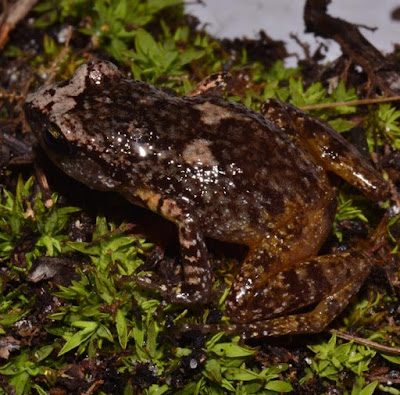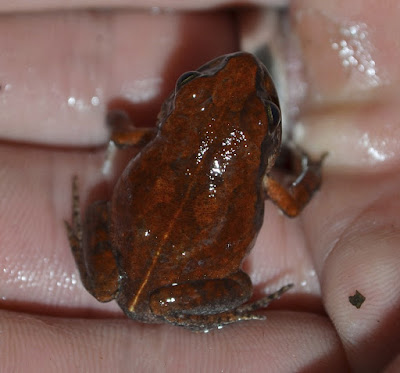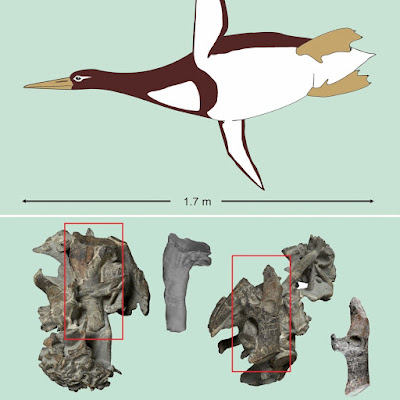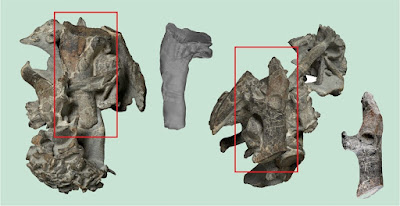![]() |
Glyphiulus subbedosae [a-b] & G. semicostulifer [c]
Likhitrakarn, Golovatch & Panha, 2017
in Likhitrakarn, Golovatch, Inkhavilay, Sutcharit, Srisonchai & Panha, 2017 |
Abstract
Two new species of Glyphiulus are described and illustrated from northern Laos. The epigean Glyphiulus subbedosae Likhitrakarn, Golovatch & Panha, sp. n. is the second member of the granulatus-group to be found in that country and it seems to be especially similar to G. bedosaeGolovatch, Geoffroy, Mauriès & VandenSpiegel, 2007. However, it differs from the latter species by a row of several strong setae near the median marginal ridge on the paraprocts, combined with the gnathochilarium being considerably less densely setose on the caudal face, and the anterior gonopods showing a pair of smaller, apical, but larger lateral teeth on the coxosternal plate. Glyphiulus semicostulifer Likhitrakarn, Golovatch & Panha, sp. n. is the fourth member of the javanicus-group to be discovered in Laos, taken from a cave. It seems to be particularly similar to G. costulifer Golovatch, Geoffroy, Mauriès & VandenSpiegel, 2007, but is distinguished by the more sparsely alveolate background fine structure of the metazonae, coupled with the gnathochilarium being considerably less densely setose on the caudal face, much stronger paramedian prongs and 4-segmented telopodites on ♂ coxae 1, the slightly longer and more slender apicoparamedian sternal projections on the anterior gonopods, and the much longer flagella of the posterior gonopods. An identification key to and a distribution map of Glyphiulus species in Laos are also presented.
Keywords: Cave, forest, Glyphiulus, key, Laos, map, millipede, new species
![]() |
Figure 1. Habitus, live coloration.
A, B Glyphiulus subbedosae sp. n., ♀ paratype from Kacham Waterfall, depicted not to scale
C, D Glyphiulus semicostulifer sp. n., ♀ paratype. Scale bars: 10 mm. |
![]() |
| A, B Glyphiulus subbedosae sp. n., ♀ paratype from Kacham Waterfall, depicted not to scale |
Family Cambalidae Cook, 1895
Genus Glyphiulus Gervais, 1847
Glyphiulus subbedosae Likhitrakarn, Golovatch & Panha, sp. n.
Etymology: To emphasize the obvious similarities to G. bedosae Golovatch, Geoffroy, Mauriès & VandenSpiegel, 2007.
Diagnosis: This new species is particularly similar to G. bedosae, with which it shares the following diagnostic characters: the presence of a row of several strong setae near the median marginal ridge on the paraprocts, combined with the gnathochilarium being considerably less densely setose on the caudal face, and the anterior gonopods showing a pair of smaller apical. It differs from G. bedosae primarily by the larger lateral teeth on the coxosternal plate. See also Key below.
Remarks: The granulatus-group currently encompasses 34 described species. The above new one is only the second species in this group to be reported from Laos. Two populations have been found, each from near a forest at a waterfall, and both show the remarkable colour pattern as described above.
![]() |
| C, D Glyphiulus semicostulifer sp. n., ♀ paratype. Scale bars: 10 mm. |
Glyphiulus semicostulifer Likhitrakarn, Golovatch & Panha, sp. n.
Etymology: To emphasize the obvious similarities to G. costulifer Golovatch, Geoffroy, Mauriès & VandenSpiegel, 2007.
Diagnosis: This new species is particularly similar to G. costulifer, with which it shares the following diagnostic characters: the unique carinotaxy formulae, coupled with anterior gonopod structural details. It differs from G. costulifer by the more sparsely alveolate background fine structure of the metazonae, coupled with the gnathochilarium being considerably less densely setose on the caudal face, the paramedian coxal prongs on ♂ legs 1 much stronger and their telopodites 4-segmented, the apicoparamedian sternal projections on the anterior gonopods slightly longer and more slender, and the flagella of the posterior gonopods much longer. See also Key below.
Remark: The javanicus-group is currently comprised of 23 species, including this new species, a fourth in this group to be reported from Laos.
Conclusions
Most Glyphiulus species in Laos come from caves or surrounding areas, except for G. subbedosae sp. n. found epigeically near waterfalls. Several of the cave species show troglomorphic traits such as an unpigmented tegument and ocellaria (if any), combined with elongated antennae and legs (Golovatch et al. 2011a). The above two new species, however, are pigmented and have short antennae and legs, while the epigean G. subbedosae sp. n. presents a distinct colour pattern. Such characters are rather evidence of the cave-dweller G. semicostulifer sp. n. being only a troglophile likely to occur also outside caves. Usually only a single cambalopsid species is found per cave. The single exception known so far concerns two Plusioglyphiulus species, P. bedosae Golovatch, Geoffroy, Mauriès & VandenSpiegel, 2009 and P. pallidior Golovatch, Geoffroy, Mauriès & VandenSpiegel, 2009, coexisting in the same cave in Kalimantan, Borneo, Indonesia, but both these species differ so strikingly in body size that this alone strongly suggests niche segregation (Golovatch et al. 2009).
The diplopods of Laos are still poorly known, with only a small fraction of their diversity being assessed. There is little doubt that, with further progress in the study of the millipede fauna of Laos, both epigean and cavernicolous, many more novelties are to be expected. As regards the Cambalopsidae alone, we seem to have only touched the tip of the iceberg (Golovatch et al. 2007a).
Natdanai Likhitrakarn, Sergei I. Golovatch, Khamla Inkhavilay, Chirasak Sutcharit, Ruttapon Srisonchai and Somsak Panha. 2017. Two New Species of the Millipede Genus
GlyphiulusGervais, 1847 from Laos (Diplopoda, Spirostreptida, Cambalopsidae).
ZooKeys. 722; 1-18. DOI:
10.3897/zookeys.722.21192














































































